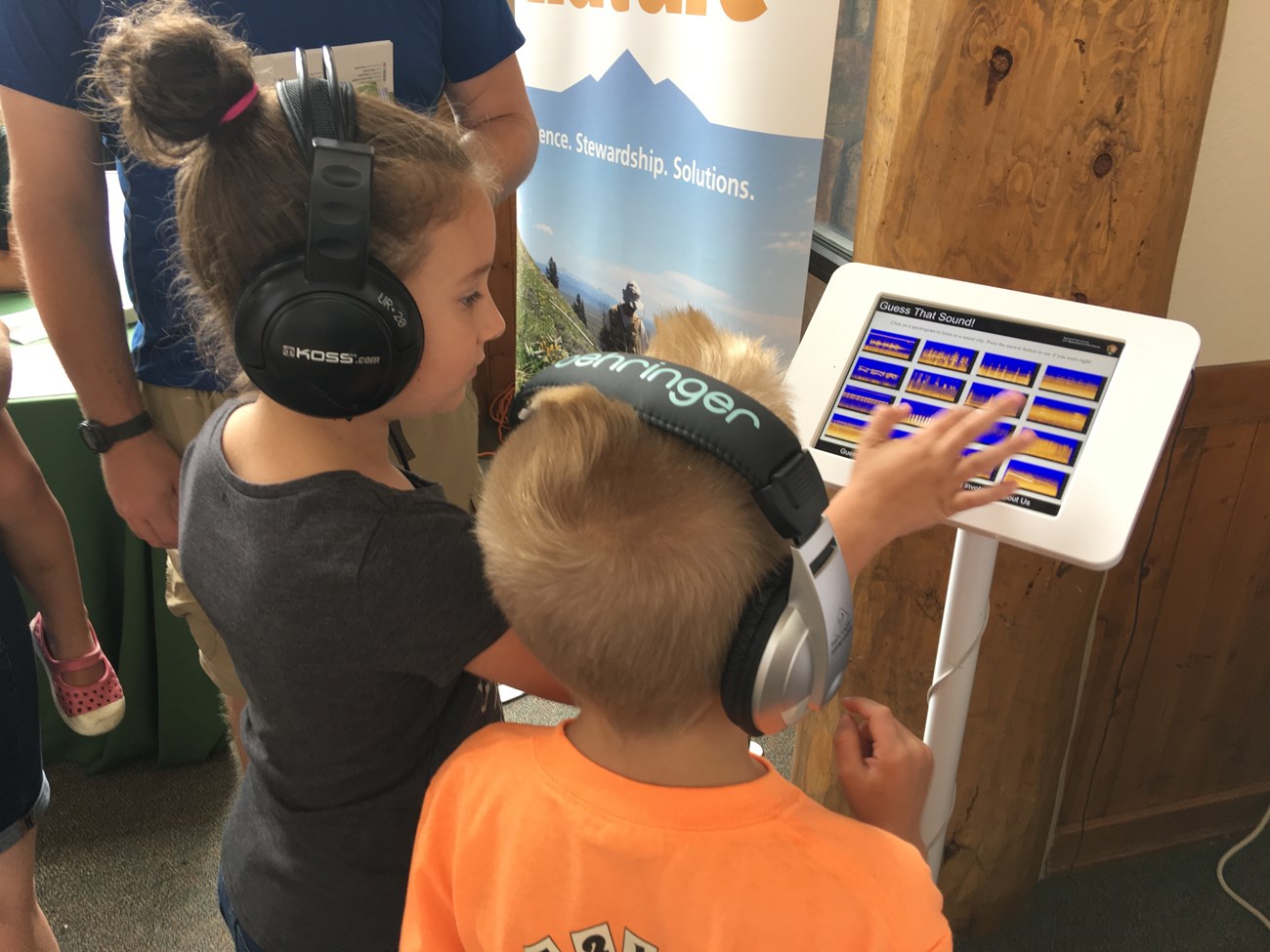
Young Sound Seekers Curriculum
Young Sound Seekers offers a collection of listening activity lessons that promote the value of natural and cultural soundscapes―for human wellness, wildlife communication, habitat health, and storytelling. Through sensory learning, these lessons give educators and park interpreters a deeper understanding of how listening can impart information about diverse habitats, cultural history of local lands, and how ecology and health are influenced by sound.
Click below to visit the universally-designed activity lessons – Great for a wider audience including those with accessibility needs and sensory sensitivities.
Full Collection (PDF version, 1,746 KB)
All six educational activities, including an overview, background information, directions, vocabulary, resources, and standards.
Soundwalk (PDF version, 281 KB)
Attendees experience a contemplative walk for listening awareness. This activity allows listeners to focus and heighten their perception of the sounds in the environment, using their ears as their eyes. Note: this is also an activity suitable for those with hearing loss, but instead focusing on visual and tactile cues of sound vibration.
DIP TiPS (PDF version, 318 KB)
People are introduced to vocabulary for describing common features of sounds and demonstrate their understanding of these words by creating original sound events. This activity introduces the task of describing specific features of individual sound events.
Echoes of the Past (PDF version, 343 KB)
Attendees identify cultural and natural sounds of their location. The activity addresses how sounds influence culture throughout history and uses listening exercises to identify current and past cultural and natural sounds of their location.
Listen, Pair, Share (PDF version, 291 KB)
The group learns to perceive layers and distinguish components of the soundscape around them, while focusing attention completely on the task of listening.
Masking Mayhem (PDF version, 350 KB)
Listeners learn about the phenomenon of masking, or when sounds interfere with each other. The activity allows people to experience first-hand how we sometimes have trouble hearing an individual sound in a crowded soundscape.
Good Vibes (PDF version, 285 KB)
Listeners are introduced to qualities of sound that affect the health of all living beings, such as the stressors of noise pollution, and the benefits of a balanced soundscape.
Soundscape Curriculum
Powerful World of Sound Curriculum [1,348 KB PDF]
A lesson plan including background information about natural sounds and impacts of noise, as well as two activities designed to help students learn about the powerful world of sound:
- Layering Sounds (25 min)
- Communicating Sounds in the Wild (25 min)
Soundscape Activities
- Create a Windsock [307 KB PDF]: Introduce the idea of the "acoustic environment"
- Communicating in the Wild [799 KB PDF] (Download sound clips needed for this activity.): Demonstrate how unnatural sound conditions can affect animals' ability to communicate and survive
- Guess That Sound [34.8 MB self-contained website with sound files, spectrograms, and photos]: Test skills in identifying sound sources
- Silent Hike/Silent Sit [.98 KB PDF]: Invite participants to listen and communicate without talking
- Sound Appreciation [427 KB PDF]: Foster appreciation for parks' acoustic environments
- Sound Bingo [192 KB PDF]: Listen for and reflect on the experience of hearing particular sounds
-
Ways to Enjoy Natural Sound [720 KB PDF]: A series of tips on ways to enjoy and protect natural sounds
Soundscape Interpretive Programs Used in Parks
- Power of Sound Interpretive Handbook [2MB PDF]: An interpretive handbook that aims to
- increase understanding of the acoustical environment as a park resource
- increase understanding of soundscapes as an important part of the visitor experience
- promote interpretation of soundscapes and acoustic resources in NPS units
- provide a reference for learning more about natural, cultural, and historic sounds in NPS units
- and provide interpreters with tools for developing programs that will connect visitors to park soundscapes and acoustic resources.
- Capitol Reef's Voice [571 KB PDF] (Download sound clips needed for this content.)
- The Dark Side of Shenandoah [481 KB PDF]
- Voice of the Desert [499 KB PDF] at Canyonlands National Park
-
Listening to Muir Woods After Dark [106 KB PDF]
Last updated: June 17, 2025
